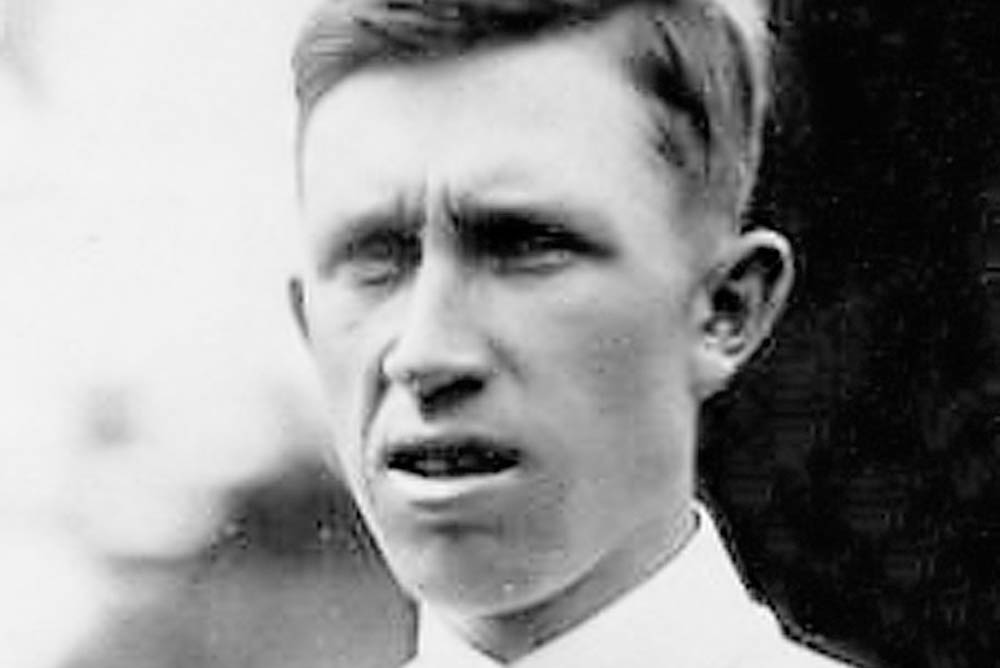
In 1913 he crossed the Atlantic and finished fifth in his first (and only) Open Championship at Royal Lytham – the highest finish by an American up until that time.
Upon returning safely home, McDermott’s financial situation took a further turn for the worse when stock market investments he had made went sour. In the winter of 1913, he headed for Florida to try and rebuild his confidence and undertook some lucrative teaching assignments. He set his sights on winning the 1914 Open but bad luck intervened and a missed train and ferry led to him missing the start of the tournament. Nevertheless, he was offered a chance to start, but declined saying it was unfair on the other competitors who had complied with the rules. On the way home, things went from bad to worse when his liner, the Kaiser Wilhelm II, collided with a grain ship in fog. Reports of this event in McDermott’s life have been outrageously exaggerated. All accounts of McDermott tell of him taking to a lifeboat, albeit in different places and for different amounts of time. One report tells of his bobbing in a lifeboat for over 40 hours in mid-Atlantic after the “shipwreck.”
The reality is far less dramatic, and easily verified. The Kaiser Wilhelm II was one of the most famous liners in the world at that time (see sidebar), and the collision was reported in the The New York Times. It is absolutely true that the ship collided with the steamer Incemore, but it was in the English Channel, not the Atlantic, and records show that the liner progressed under its own steam to Southampton for repairs. Some lifeboats were deployed, but never lowered. Despite several lurid accounts of the ship sinking, in reality it took on very little water. The compelling image of the young maestro’s sanity seeping away with the crash of each mid-Atlantic wave over his lifeboat for almost two days is a complete fiction.
Some see the accident as the straw that broke the camel’s back, but again the reality is more prosaic. McDermott returned to the US and finished ninth in the US Open (behind Walter Hagen, who won his first Major), his fifth successive top-10 finish. More telling was a blackout and collapse he suffered back at his club in Atlantic City. He resigned from his job and after treatment suffered a rapid decline and was placed in several sanatoriums before being committed by his sister to Norristown Hospital, an asylum, as “a lunatic” in June 1916. A Philadelphian golf historian, James Finegan, reported that whilst there, his medical reports at various times labeled him as “paranoid, delusional, catatonic, hallucinatory, incoherent, apathetic, silent, retarded, passive, preoccupied, reclusive.” An unfair commentator would say that this description could apply to many professionals today, but McDermott was clearly a very ill young man. Finegan also stated that, “He spent endless hours scribbling unintelligibly in notebooks, claiming he was writing his mother's and father's names.”
Through either uncharacteristic sensitivity, or more likely indifference, the media of the day made little mention of Johnny’s commitment and he slid into near obscurity over the following decades. His fellow pros held a fundraiser for him in 1924 and in 1928 Walter Hagan visited Johnny in Norristown. It is reported that they played together on a six-hole course laid out in the sanatorium grounds, and Hagan reported that McDermott’s swing was “as fluid as ever.” Belated recognition came when he was elected to the Hall of Fame in 1941, although he was “unelected” during the fiasco that followed the consolidation into one single Hall of Fame in the World Golf Village in Florida, a shameful situation that continues to this day.
Johnny never fully recovered, but left the asylum every so often to play a round of golf and was occasionally seen shuffling around at subsequent US Opens. He was last seen at Merion in the 1971 Trevino-Nicklaus play-off, a solitary figure trudging through the rain. He was reportedly being chased out of the clubhouse due to his scruffy appearance when he was recognised by Arnold Palmer and ushered back in. He died a couple of months later in August, just shy of his 80th birthday.
Why is he so little known today? Johnny McDermott is perhaps one of the most tragic figures in the history of golf, but it may well be that the lack of recognition of his outstanding achievements is the bigger tragedy. It is fitting that from generation to generation a new young superstar arises, forcing people to dust off the record books and rediscover the name of America’s first, and unforgivably forgotten, golfing prodigy.
Pages
Click here to see the published article.











